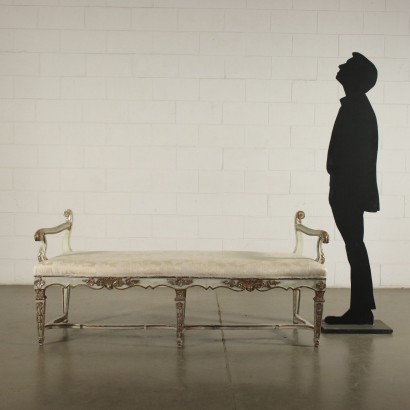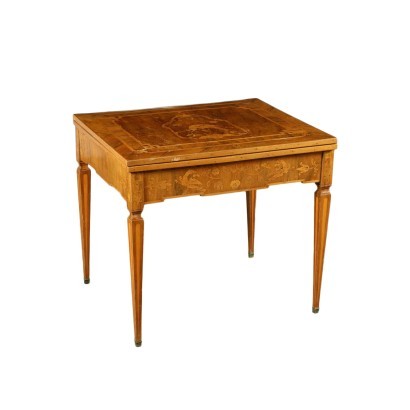Neoclassical Bench Spruce Lime Italy XVIII Century
Features
Style: Neo-Classical (1765-1790)
Age: 18th Century / 1701 - 1800
Origin: Central Italy
Main essence: Silver Fir , Linden
Description
Neoclassical bench from central Italy, supported by truncated pyramidal legs carved with candelabra motifs and linked to the lower band by a tethered nut carved with roses; they are connected by moved traverses. The lower band is shaped and decorated with leafy carvings; the armrests are wavy and carved in a curl. In spruce and lime, entirely lacquered and gilded in mecca, the seat is padded.
Product Condition:
Product in fair condition showing some signs of usage.
Dimensions (cm):
Height: 77
Width: 167
Depth: 57
Seat height: 52
Certificate issued by: Enrico Sala, expert
Additional Information
Style: Neo-Classical (1765-1790)
This historical period includes a first phase that can be properly defined as the Louis XVI style.nOnly at a later time, with the maturation of archaeological fashions, was a new vision of furnishing civilization formulated and codified, now fully attributable to the Neoclassical Style.
In fact, both trends coexisted in unison until the last years of the eighteenth century.
nIn the field of cabinet making, the Directoire, Retour d'Egypte, Consular and Empire styles also fall within the neoclassical era.
nFind out more about Neoclassicism with the insights from our blog...
n




























